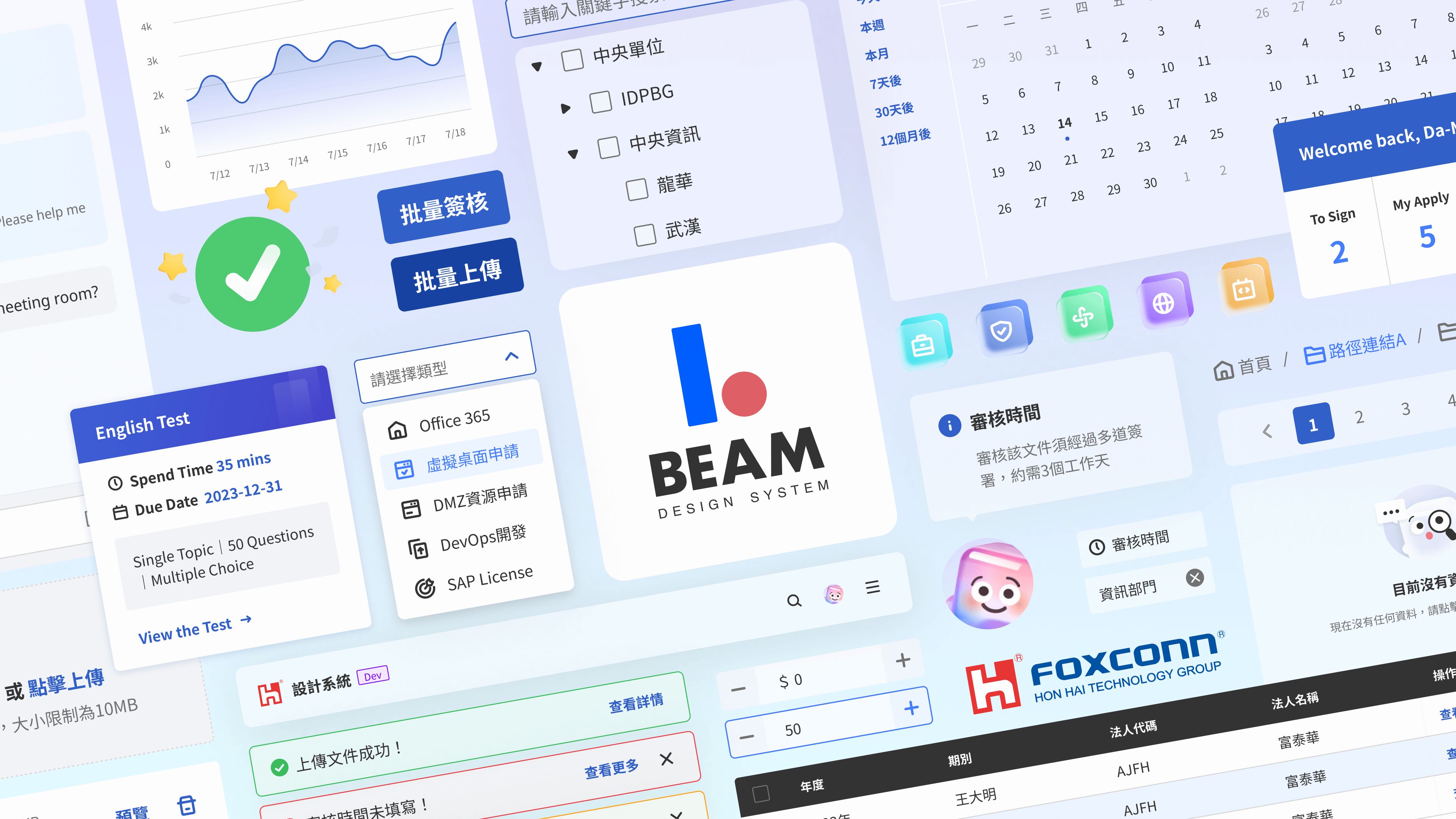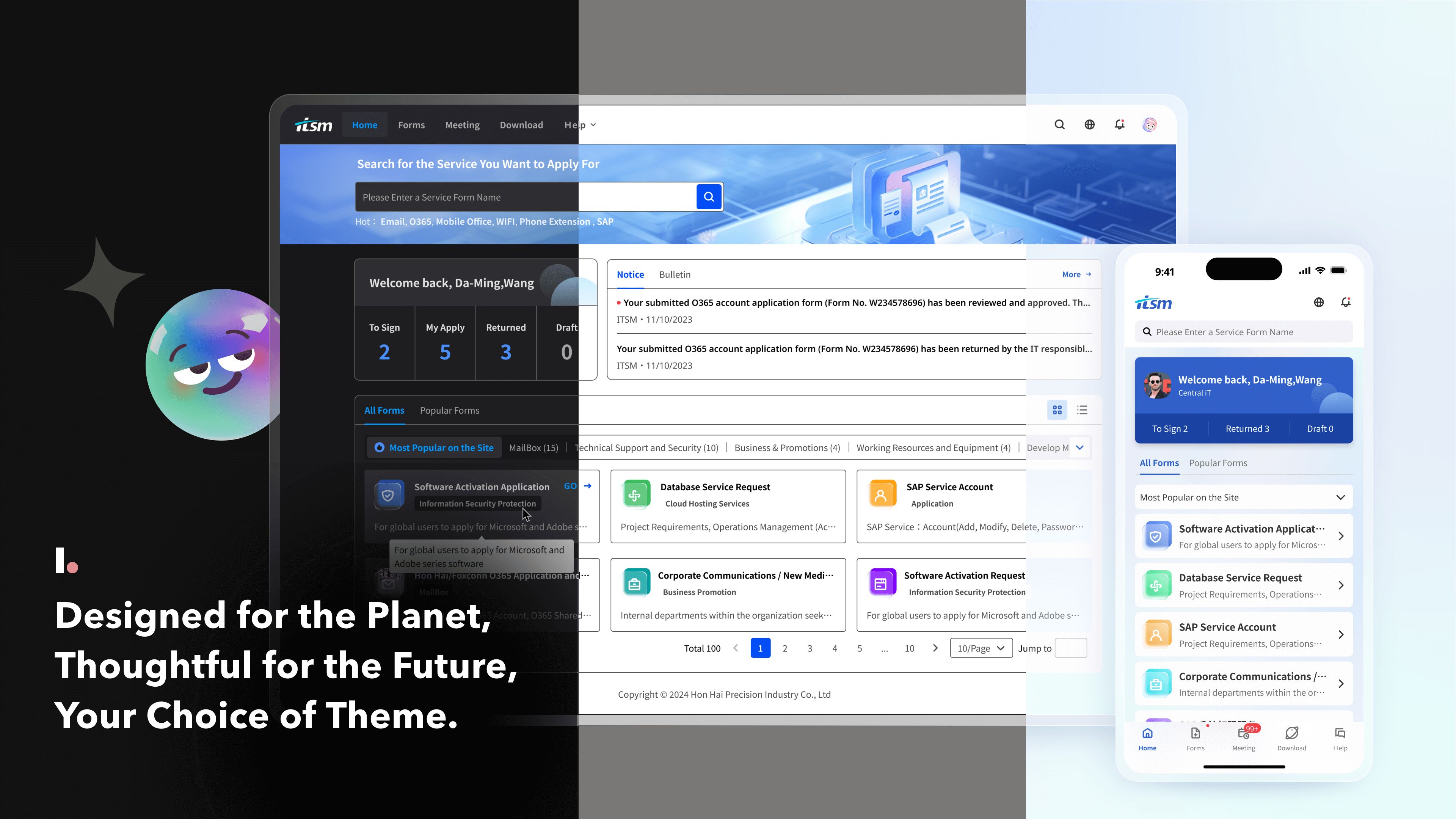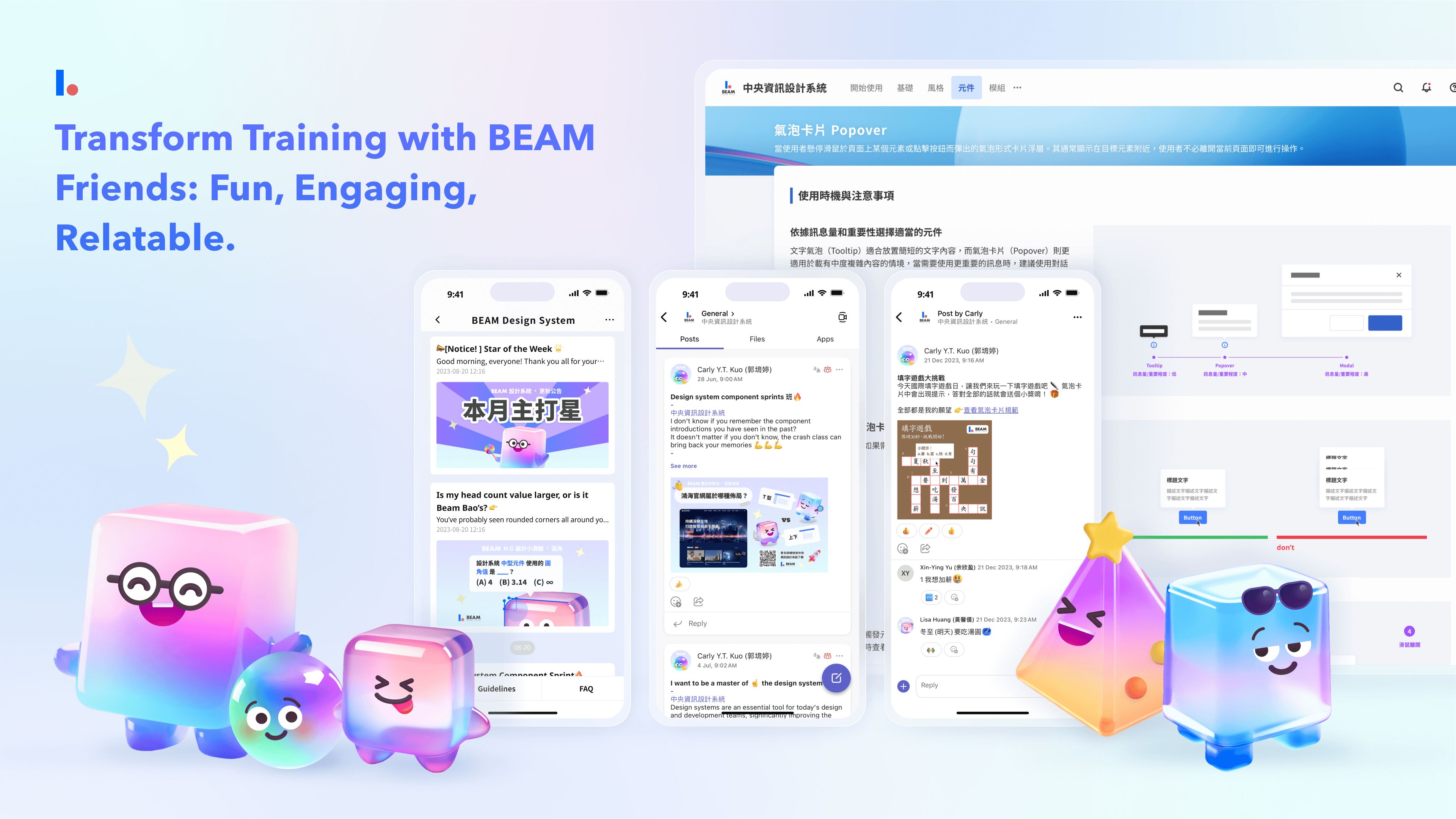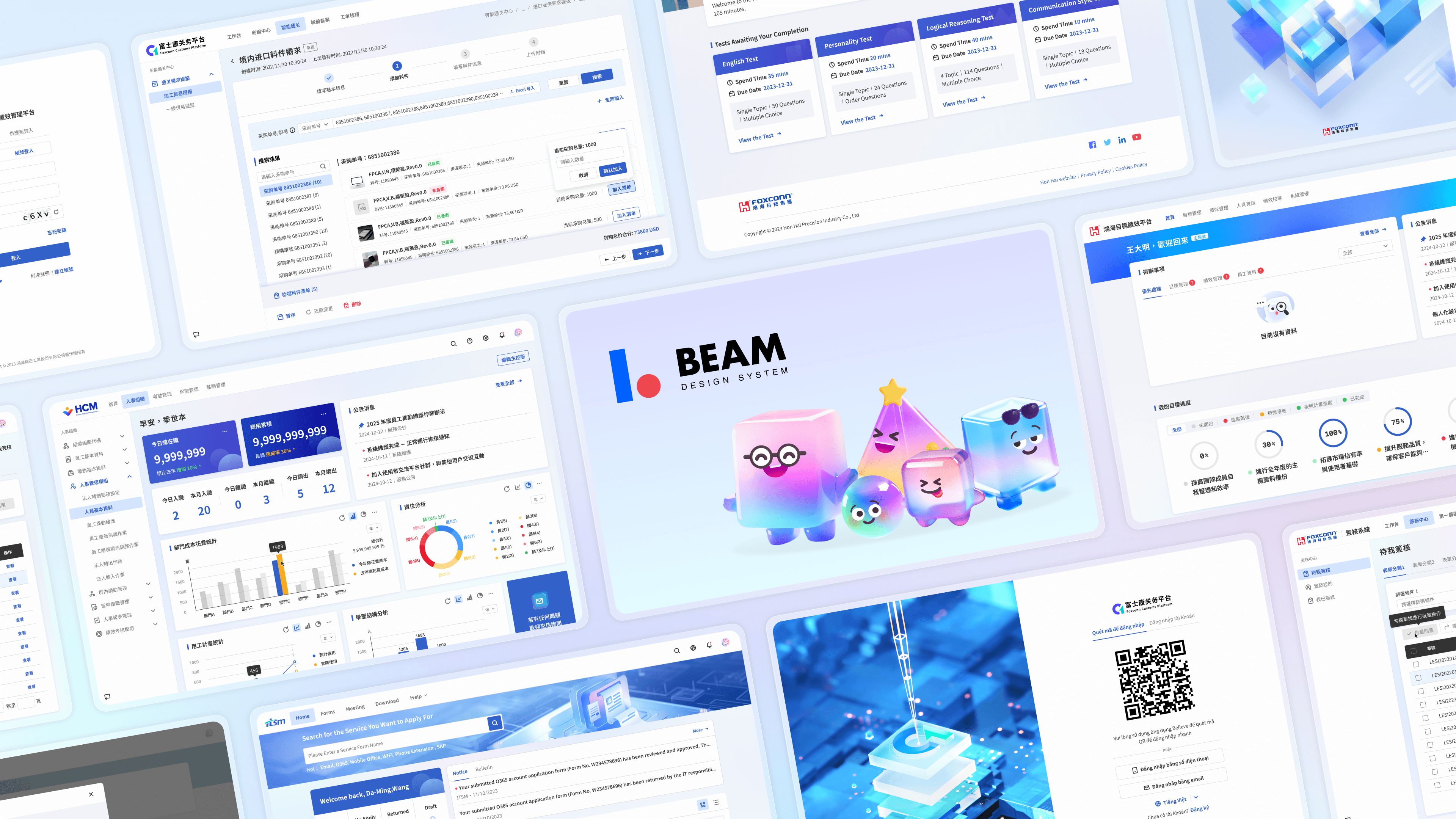
Designers
HsiangLin Yang, Yichun Chou, HsinYi Huang, YiChen Lan, Long Chin, YuTing Kuo, LiFang Wan, WenJun He
Year
2025
Category
Product
Country
Taiwan
Design Studio / Department
Central Information Technology

Three questions to the project team
What was the particular challenge of the project from a UX point of view?
The BEAM Design System addressed key UX challenges, including inconsistent platforms in FOXCONN that required projects to start from scratch, leading to higher development and maintenance costs. Users faced a steep learning curve due to varying interfaces and interactions, which hindered efficiency. The design system also needed to cater to diverse user groups, prioritizing accessibility. Including sufficient contrast in the color system, adaptable text sizes, and dark or high-contrast mode to support not only visually impaired users but also employees operating in a wide range of working environments. Balancing these requirements with the need to promote usability, inclusivity, and seamless collaboration was a significant challenge.
What was your personal highlight in the development process? Was there an aha!-moment, was there a low point?
A low point in the BEAM Design System’s development was the initial resistance from teams unfamiliar with its benefits. However, engaging strategies, such as interesting posts, interactive workshops, article promotions, and personified BEAM Friends characters, created a close affinity between the system and its users. This approach led us to the aha!-moment: seeing teams adopt the system and leverage it to create quick proposals and validate concepts, streamlining workflows. By integrating feedback—such as flexible text sizes, accessible color contrast, and dark mode or high-contrast mode—we demonstrated the system's adaptability and its value as a foundation for continuous improvement.
Where do you see yourself and the project in the next five years?
In the next five years, BEAM Design System will evolve into a robust, AI-driven platform that generates design drafts based on its expanding code database and component library. By leveraging data-driven insights, it will continuously improve through analysis of user feedback and component usage. BEAM aims to become an open resource, serving both enterprise needs and customer solutions. Additionally, its training sessions will expand into a comprehensive service package, applicable to other design systems. This vision ensures BEAM remains a pioneering tool, fostering innovation, efficiency, and accessibility across industries.


